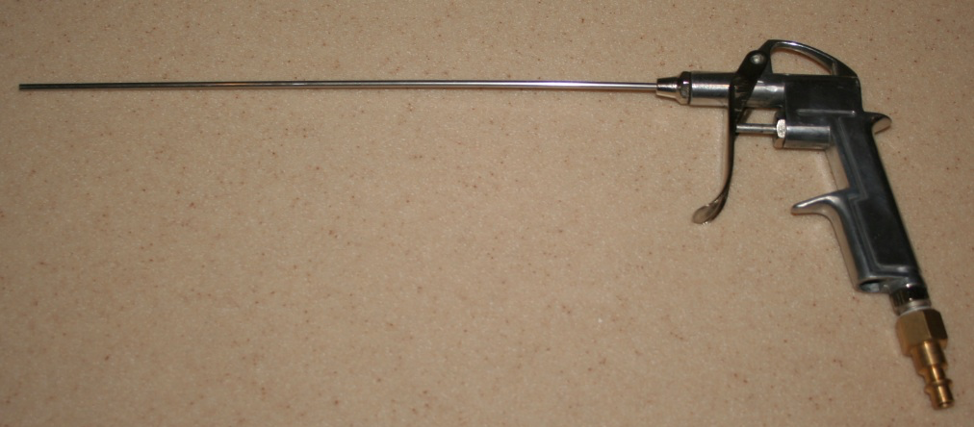Theoretically, you should “backflush” the “radiator”. And to a degree, you should.
BUT. let’s look at your cooling system:
The air enters the side, passes through at least the CAC (Charge Air Cooler), then the radiator. There will be additional coolers such as hydraulic fluid or fuel coolers on many chassis.
Most of the dirt will be filtered (read deposited) on the front (outside) of the CAC. It is extremely difficult to shoot from the back (fan side of the radiator) with enough PSI to go through the radiator, air gap, and CAC and still have enough PSI to dislodge crud from the outside of the CAC without taking a real chance on bending the radiator fins. The confines of working from underneath and around the fan blades make it even more challenging.
SO, using a garden nozzle on city water you will carefully shoot from BOTH the inside AND the outside. Most of the dirt will be removed from the outside of the CAC by spraying from the outside. I only use a detergent such as Joy if there is an oily deposit on the fins. IF it is just dirt, water works well.
Let the effluent fall into a bucket so you can monitor the amount of dirt you are removing– clean until no more crud comes out.
On some Foretravels, there is a removable grill covering the CAC. Removing it makes cleaning a lot easier. Brett Wolfe 1993 U240
I am in some ways blessed with the Oshkosh chassis. The radiator is high off the ground and there is a slatted door that gives access to the radiator and cap. Also, my fan freewheels allowing me to move the fan blades to squirt water through it. John Cooper 1991 GV 36′
My ’92 has an 8″ square vented grill above the radiator, where I can open the radiator cap. I can bend the end of a hose/nozzle down in front of the charge cooler inside of the grill grate and spray a fair amount of the front fins. The rest I get from between the individual grates from the outside. You can get the hose in between the charge cooler back and the front surface of the radiator and spray them also. I spray Simple Green on all surfaces about 15 minutes before I rinse. On mine it is near impossible to rinse much of the engine-side of the radiator, as the only opening is pretty much covered by the radiator fan blades. The rest is a shroud protecting the radiator. Don Hay ’92 U-280, The Hayfever Express
On our coach, our radiator slats grill is held in place by several rivets that are completely visible for the outside. We drilled out each rivet and slats come off in one piece. We can then touch, clean, etc. the aluminum turbo inter-cooler and with some effort clean out debris that sits between the inter-cooler, hydraulic fluid cooler & coolant radiator. To put the slats back I used a screw that goes into the captured nut.
To keep debris out in the future, all airflow that can get sucked into the radiator without going through slats must be sealed with spray insulation foam. These airflow holes are on the side and bottom of the conveyer belt material that surrounds the radiator area. We also put a piece of hardware cloth screen behind the slats.
When we drive slowly near grass that has just been cut, like in campground, any loose grass, etc can get sucked into the radiator area by the large airflow from radiator fan blades. Barry & Cindy 1997 U270 36′
I found this neat tool at Harbor Freight for blowing out debris from behind the air cooler.
I connect it up to the remote air connection I use to fill my tires. Barry Beam 2003 U320
